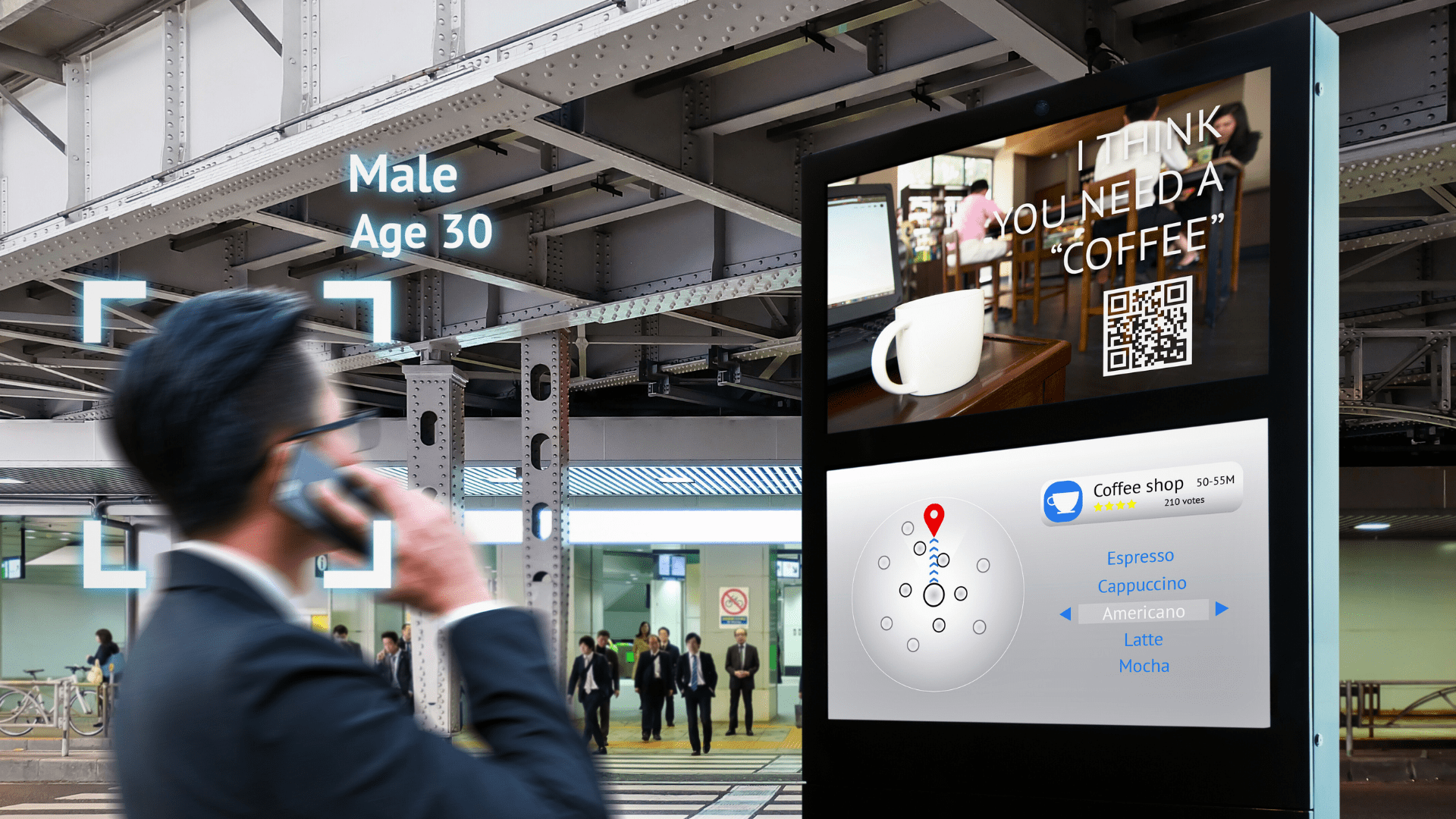“Good advertising does not just circulate information. It penetrates the public mind with desires and belief.” – Leo Burnett.
In today’s digital era, how are marketers redefining the art of persuasion? Enter digital signage software, a groundbreaking technology that is transforming visual communication and marketing strategies. This article explores the immense potential of digital signage software, its applications, and its benefits for marketers and business owners.
What is Digital Signage Software?
Digital signage software is a technology solution that allows businesses to remotely manage and display digital content across multiple screens. It combines dynamic visuals with advanced technology to create a powerful tool for communication and marketing. By enabling real-time updates and offering centralized control, businesses have unparalleled flexibility in crafting and delivering their messaging.
The Core Features of Digital Signage Software
Cloud-Based Digital Signage Software integrates cutting-edge features designed to optimize how businesses convey their messages. At its core is a remote content management system, enabling users to control multiple screens across diverse locations from a single platform. This feature ensures consistency, reduces manual interventions, and significantly saves time.
Real-time updates allow businesses to stay agile by instantly adapting content to changing events, trends, or promotional needs. Additionally, integration capabilities connect the software with existing marketing tools or real-time data sources such as news feeds, social media updates, or product inventories, enriching the content delivered to viewers.
 How It Works: The Technical Perspective
How It Works: The Technical Perspective
Digital signage software operates on two primary frameworks: cloud-based and on-premise solutions. Cloud-based systems provide scalability and ease of access, as users can manage content remotely using any internet-enabled device. These solutions are particularly suited for businesses with dispersed locations requiring centralized management.
On-premise systems, however, prioritize data security by housing software and data within the organization’s internal infrastructure. Though less flexible in terms of remote access, these systems are preferred by enterprises handling sensitive information. Both setups require compatible hardware such as LED displays, LCD panels, or interactive touchscreens. In advanced implementations, sensors and AI-driven modules may also be integrated to enhance interactivity and personalization.
Benefits of Digital Signage Software for Marketers
Digital signage software’s strategic advantages make it a transformative tool in marketing. It elevates how businesses connect with their audiences, ensuring impactful and measurable engagement.
Enhanced Engagement Through Dynamic Content
Dynamic and interactive content is a defining strength of digital signage. Unlike static posters or billboards, digital displays can present visually engaging animations, videos, or real-time data that captivate attention. Interactive screens further elevate engagement by allowing users to explore information through touch or gesture-based controls.
Personalized messaging is another pivotal benefit. By analyzing audience data—such as demographics or behavioral trends—digital signage can adapt its content in real time. For example, a clothing store can highlight winter apparel during cold weather, tailoring its messaging to the immediate needs of its customers.
Cost Efficiency Compared to Traditional Signage
While traditional signage incurs recurring printing, shipping, and installation costs, digital signage represents a more sustainable and cost-effective alternative. Long-term savings offset initial investments in software and hardware, as updates can be made digitally without additional expenses.
Moreover, businesses using digital signage reduce their environmental footprint. Eliminating printed materials decreases waste, aligning with modern sustainability practices that resonate with eco-conscious consumers.
Data-Driven Marketing Capabilities
Modern digital signage software incorporates advanced analytics that empower marketers to assess and refine their strategies. Metrics such as dwell time, interaction rates, and conversion data provide insights into how audiences engage with displayed content. This data-driven approach enables businesses to craft campaigns with precision and achieve greater ROI.
Additionally, targeted advertising becomes highly effective with digital signage. By using audience segmentation, businesses can deliver tailored messages to specific groups, ensuring their marketing efforts resonate and drive action.
Applications in Business
Digital signage is not confined to a single industry; its versatility makes it a valuable asset across diverse sectors. Whether in retail, hospitality, or corporate environments, this technology transforms how businesses communicate and operate.
Retail and E-Commerce
Retailers leverage digital signage to enhance the in-store shopping experience. Dynamic displays promote ongoing sales, new arrivals, or seasonal discounts, capturing shoppers’ attention as they browse. Integration with e-commerce platforms allows real-time updates on product availability, enabling customers to check stock or explore alternatives directly on-screen.
Interactive kiosks provide further value by helping customers locate products, read reviews, or access personalized recommendations. This fusion of online convenience and offline presence bridges the gap between digital and physical shopping experiences.
Hospitality and Events
The hospitality industry thrives on delivering exceptional guest experiences, and digital signage is critical in achieving this goal. Hotels utilize digital displays to inform guests about amenities, dining options, or local attractions. Event organizers similarly benefit by displaying schedules, speaker information, or venue maps, ensuring attendees stay informed and engaged.
In large venues, interactive wayfinding systems simplify navigation for guests. These systems reduce confusion and enhance overall satisfaction, especially in settings like convention centers or stadiums.
Corporate Environments
Within corporate settings, digital signage serves as an effective communication tool. Displays in common areas can share important announcements, celebrate achievements, or present motivational content. Real-time updates ensure that employees stay informed about critical metrics or organizational changes.
Externally, digital signage enhances branding efforts. Visitors to corporate offices are greeted with professional displays showcasing the company’s vision, milestones, or client testimonials. This leaves a lasting impression and reinforces the organization’s credibility.
Future Trends in Digital Signage Software
The continuous evolution of technology ensures that digital signage will remain at the forefront of innovation, offering new possibilities for enhanced functionality and impact.
AI-Powered Personalization
Artificial intelligence is revolutionizing digital signage by enabling personalized content delivery. AI algorithms analyze real-time data, such as viewer demographics or location, to display messages most relevant to the audience. This creates a tailored experience that significantly improves engagement and conversion rates.
Integration with IoT Devices
The Internet of Things (IoT) is reshaping digital signage through connectivity and automation. Smart displays that interact with wearable devices or mobile apps enable immersive experiences. For example, fitness centers might use IoT-integrated signage to display personalized workout recommendations based on a user’s activity data.
IoT also enhances operational efficiency by automating tasks like monitoring hardware health or adjusting content schedules based on traffic patterns. This reduces manual effort and minimizes downtime.
Sustainability and Energy Efficiency
As businesses increasingly prioritize sustainability, digital signage technology adapts to meet these demands. Energy-efficient displays and intelligent power management systems reduce electricity consumption, particularly during off-peak hours. Manufacturers are also exploring recyclable materials for hardware, making digital signage a greener choice for businesses.
Transforming the Marketing Landscape with Digital Signage Software
Digital signage software is not just a technological advancement but a paradigm shift in marketing. By combining dynamic visuals, data-driven insights, and personalized messaging, it creates meaningful connections between brands and their audiences. Its applications extend across industries, making it a versatile and indispensable tool for modern businesses.
For marketers and business owners, adopting digital signage software is more than an upgrade; it’s a strategic investment in future-proofing their operations. In a world where attention is currency, digital signage ensures that your message not only reaches its audience but resonates with them profoundly.
This is a sponsored post by Bird Marketing Limited. All reviews and opinions expressed in this post are not based on the views and opinions of Tomorrow’s World Today.



 How It Works: The Technical Perspective
How It Works: The Technical Perspective



